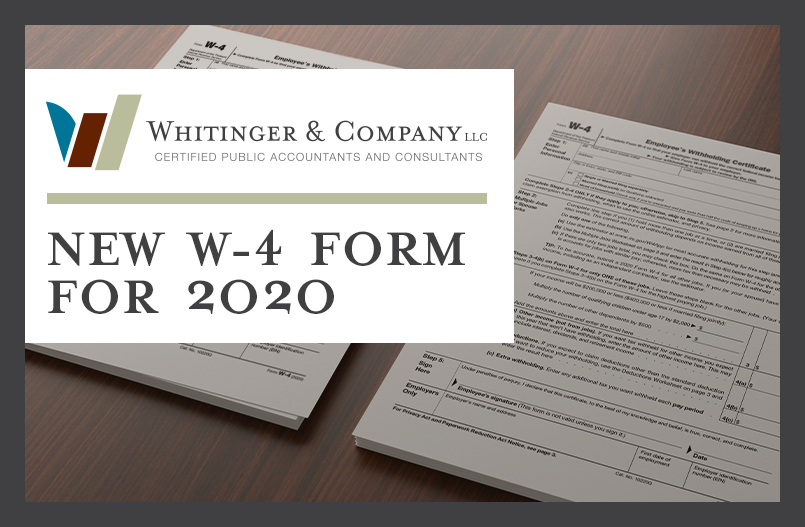Effective January 1, 2020, a new Federal Form W-4, Employee’s Withholding Allowance Certificate, will be required for new employees and existing employees making withholding changes. Form W4 for 2020: https://www.irs.gov/pub/irs-pdf/fw4.pdf
What is changing?
The updated Form and associated withholding tables have been completely redesigned due to the 2017 Tax Cuts and Jobs Act mandates. Improvements to the form are intended to increase the transparency and accuracy of employee withholding by taking into account spousal income, multiple jobs, and non-employee income (investments, rental income, retirement income, etc.). Other Form changes include new inputs used for calculating federal income tax withholding and no longer allowing employees to claim any number of personal or dependent allowances.
The IRS is not requiring all employees to complete the revised Form and has designed the withholding tables so that they will work with both the new and prior-year forms.
So, who will be required to fill out the new form?
- Employees hired on, or after, January 1, 2020
- Any Employee who makes changes to their withholding elections at any time in 2020 or later
- Any Employee who has never previously provided you with a Federal Form W-4
What happens if my employee does not fill out the new form?
Existing Employees withholding will continue based on their previously submitted W-4. Employees hired on or after January 1, 2020, who do not provide you with the new 2020 Form W-4, will need to be withheld at the highest single tax rate.
What should I do next?
Before completing the new form, please read the instructions that accompany it. The IRS also has a great set of FAQ’s that can be accessed here: https://www.irs.gov/newsroom/faqs-on-the-2020-form-w-4.
Steps 1 and 5 must be completed. Steps 2-3-4 are optional but recommended in efforts to match your federal income tax withholding with your tax liability.
Step 1 is for your personal information; Step 2 is for households with multiple jobs; Step 3 is used to claim tax credits for dependents (married filing joint taxpayers need to be careful here and coordinate with their spouses when completing this form to avoid duplicating child tax credits); Step 4 is for other adjustments (additional income such as interest and dividends, itemized deductions that exceed the standard deduction, and extra tax you want to be withheld); and Step 5 is where you sign the form.
We advise all tax clients to review payroll withholdings annually. You can use the IRS’s withholding estimator, or contact your tax preparer to discuss further. https://www.irs.gov/individuals/tax-withholding-estimator.
If you have any questions on this topic as an employer or employee, please contact your Whitinger accounting professional. We are more than happy to help you navigate this change.
Whitinger & Company


